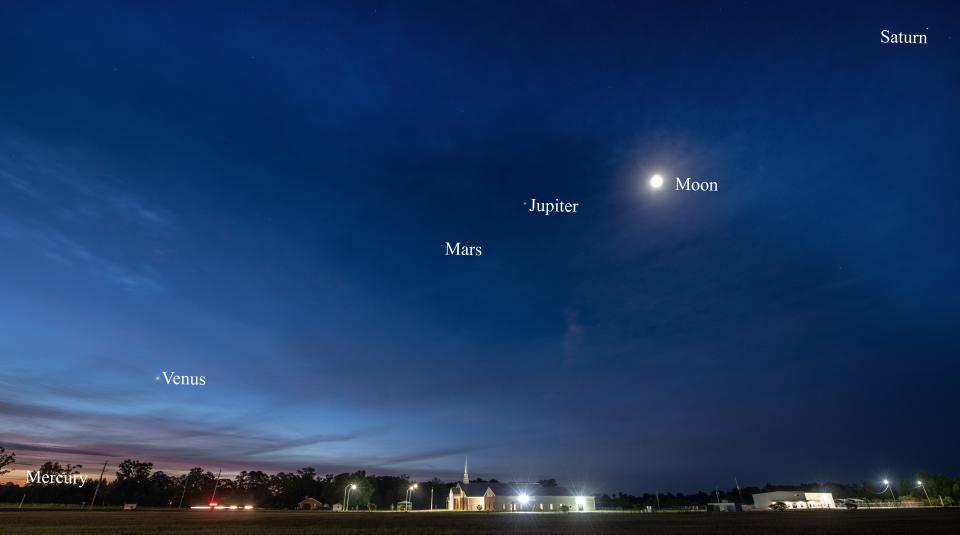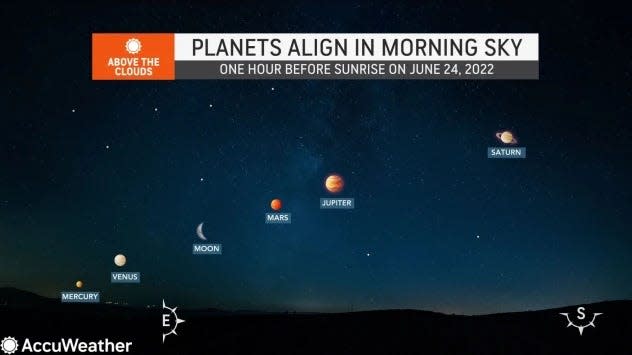5 planets are aligned in a rare 'parade' this month. Here's when to see the sky spectacle.
Five of the planets in our solar system will appear in a line across the early morning skies until the end of June, astronomers say, in a spectacle that won't be seen again for nearly 20 years.
While the best day to see the "planet parade" was likely Friday morning — as the planets were joined by the waning crescent moon — it will still be visible throughout the latter part of June.
And you don't need a telescope to enjoy it.
The pre-dawn sky features Mercury, Venus, Mars, Jupiter and Saturn, a planetary procession that can be seen above the eastern horizon , AccuWeather said. The best time to view them is about 45 to 60 minutes before sunrise on cloud-free mornings.

"The delightful view of all five naked-eye planets will greet early risers throughout the month of June," Sky and Telescope magazine said. "While seeing two or three planets close together (in what’s known as a conjunction) is a rather common occurrence, seeing five is somewhat more rare.
"And what’s even more remarkable about this month’s lineup is that the planets are arranged in their natural order from the sun," the magazine noted.
Viewers have been able to see the five planets stretching across the sky from low in the east to higher in the south:
Alexander Krivenyshev in Manhattan, New York, captured this panorama on June 10, 2022 and wrote: "5 planets - Mercury, Venus, Mars, Jupiter and Saturn align at dawn over NYC but good luck getting them into a single shot (image)." Thank you, Alexander! pic.twitter.com/X1f4yAfj2w
— EarthSky (@earthskyscience) June 11, 2022
Mercury will be tougher to spot, according to Sky and Telescope: "Early in the month, viewers will need an unobstructed eastern horizon as well as binoculars to potentially see the little world. As the month wears on, Mercury climbs higher and brightens significantly, making it easier to see, and thus completing the planetary lineup."
Mercury, Venus, Mars, Jupiter and Saturn will not appear in this order again from the perspective of the Earth until August of 2040, AccuWeather said.
A planet-size sunspot is pointed toward Earth. What happens if there are solar flares?


This article originally appeared on USA TODAY: Planets align June 24: Best time to see 'parade' of 5 planets

 money
money 